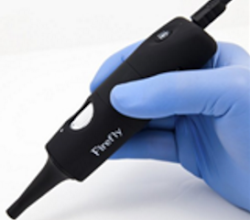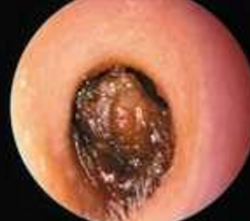Micro Suction ear Wax Removal
Children above 6 years of age
Contact us on
Fewer GP surgeries are providing ear wax removal, however there is still a need to deal with impacted ear wax. Micro suction wax removal is the safest, quickest and most up to date method of removing impacted ear wax. This service is available to you in all of our clinic locations or in the comfort of your home and will be performed by fully qualified, BSHAA accredited specialists. Contact us on 01206 823602 or book an appointment online.
Minimum age for our procedure is 6 years of age. Patients aged 6-18 years must be accompanied by an adult. Before your appointment, please apply a wax softening preparation (either drops of olive oil or Earol which is available from us). Apply once a day just before you retire for three days leading up to your appointment.
The cost of a ear wax removal appointment:
£40 monaural/£70 binaural – In clinic consultation and wax removal
£150.00 – Home visit consultation and wax removal (within 5 mile radius of clinic locations).
£30.00 – Additional Call-out charge for home visit wax removal 5-10 mile radius from clinic.
£50.00 – Additional Call-out charge for home visit wax removal 10-20 mile radius from clinic.
If an in-clinic appointment is booked but wax removal is not required, there will be a £30.00 consultation fee.
If an appointment is booked but not attended without notification of a cancellation, there will be a £30.00 charge.

and after wax removal.


Facts about ear wax production and ear wax removal
The ear has a self-cleansing mechanism. Skin migrates out from the centre of the ear drum carrying wax bacteria and dead skin with it. With age this process slows down. The ear canal can narrow too as the cartilage and skin in the first third of the ear canal narrows. The wax production generally remains the same but can be accelerated by colds flu and upper respiratory infections. If excessive wax is identified, this may be the cause of any hearing difficulty you are currently having.
Your audiologist can remove the wax using micro suction (a miniature vacuum cleaner designed specifically for the purpose of removing excessive ear wax). This is the safest means of removing wax and it is quick and painless.
– Following the wax removal we will contact you in due course as part of our after-care and offer a 15-minute free hearing screening test to check your hearing thresholds against average normal hearing. If the wax has been the only issue affecting your hearing, the screening assessment produces normal hearing thresholds.
– If the screening test identifies a potential hearing loss, further investigation is required and a diagnostic assessment will be offered to you to determine where the loss is coming from. We will then be able to inform you if the loss requires immediate correction or just needs to be monitored over the next 12-18 months. The diagnostic assessment will include exploration of areas of difficulty you may be experiencing to do with your hearing.
– Video Otoscopy. Video otoscopy is a miniature scope used to photograph and capture the visual image of your ear canal and ear drum. This is used to examine the ear canal and your audiologist will use this to explain the anatomy and physiology of your ear canal. It can help you to see the structure of your ear canal like never before. Your audiologist can show you if there is impacted wax that requires removal and can show you the before and after images of the wax removal process. This is available in our Head Office clinic in Alresford. Our other clinic locations are mobile units.
